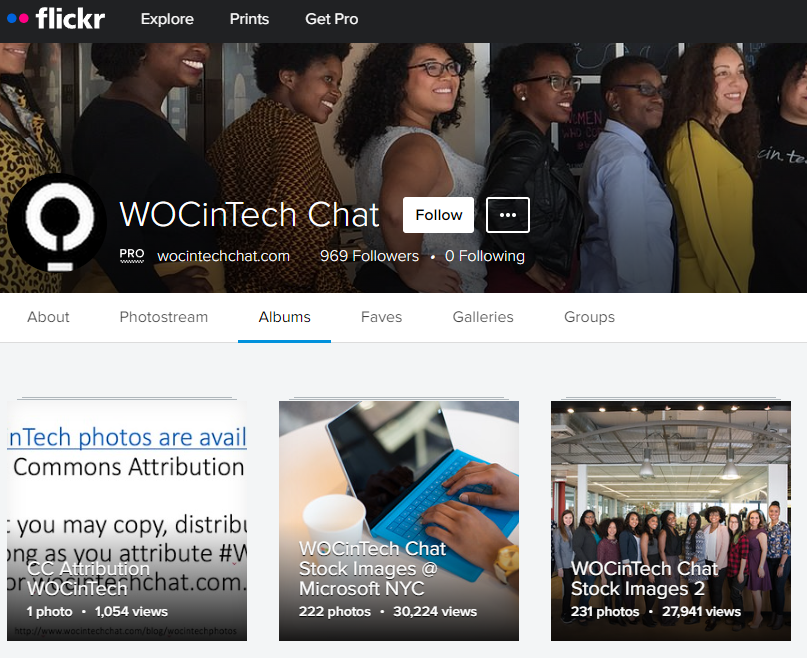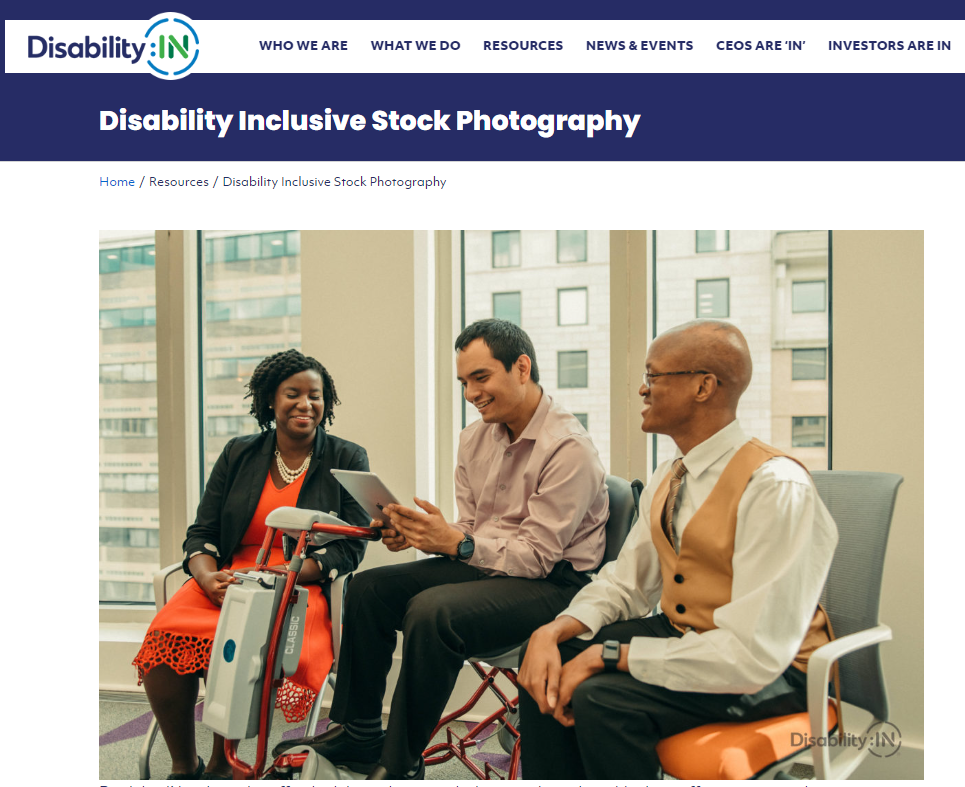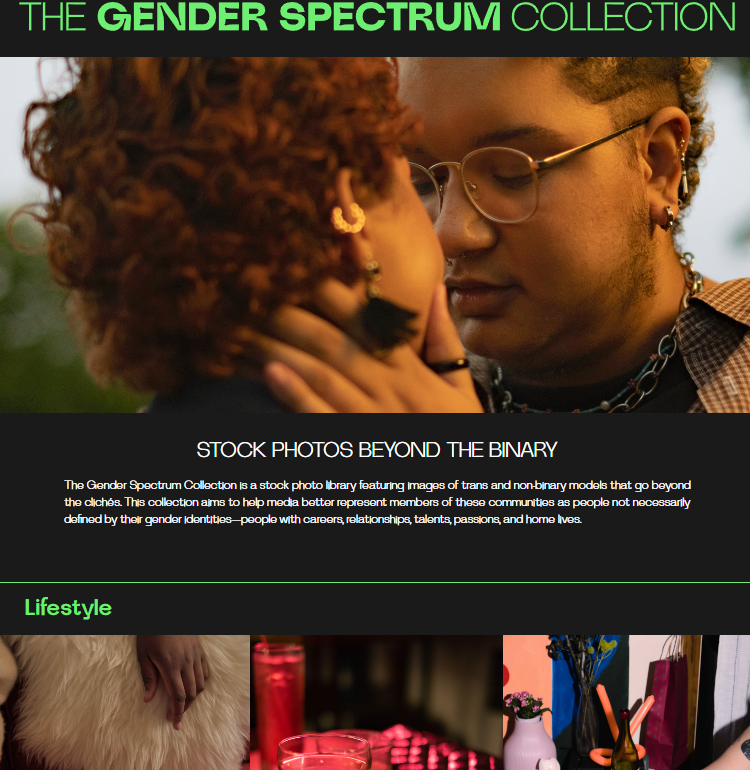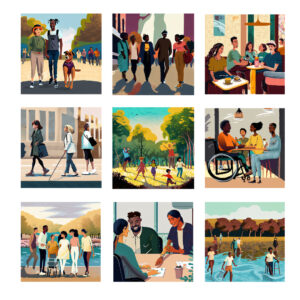The Ongoing Struggle for Representation: Disabled People of Color in Stock Photography
The power of imagery and representation cannot be overstated. Visual representations shape our perceptions, beliefs, and ideals. And while diversity and inclusion are championed as essential values, the lack of representation for disabled people of color in stock photography remains a glaring and problematic oversight. Representation matters because it allows people to see themselves and others as valuable, capable, and worthy of respect and dignity. Representation also fosters diversity, inclusion, and innovation, which are essential for solving the complex challenges that we face as a global society. By suggesting more representation, you can help create a more equitable and sustainable world for everyone. Explore why it is so challenging to find adequate representation in a society still grappling with its colonial past and its ramifications, and learn ways you can make an impact to change this.
Use Diverse Stock Photos
Here are some businesses that specialize in disabled diverse stock photos. Hire Disabled Photographers!

Disabled And Here Collection offers free and inclusive stock images of disabled BIPOC . The images are licensed under Creative Commons attribution . The website also has a blog with stories and interviews of disabled BIPOC creators and activists . The website is part of Affect, a disability-led organization that promotes disability justice. Elea Chang is a user experience designer turned community organizer who created Affect Conf. Currently, Elea is the board president of Stumptown Syndicate and resides in the Pacific Northwest.

WOCinTech: WOCinTech Chat, Flickr, Pexels, Unsplash #WOCinTech was founded in 2015 as a Twitter chat to provide a safe space to discuss issues in the tech industry. As a reply to the lack of stock photos showing WOC and non-binary POC in tech, the founders organized three photoshoots, which were in part supported by large tech companies.

Disability:IN: A disability-led organization that offers free and inclusive stock images from their own perspective, with photos celebrating disabled people of color in various settings and activities.

The Gender Spectrum Collection by VICE: A free LGBTQ+ stock photo library featuring images of trans, non-binary, and gender non-conforming models that go beyond the stereotypes.

Chromat: A fashion brand that features models of different sizes, shapes, abilities, genders, races, and ethnicities in their campaigns and runway shows.

Other Posts with more diversity:
13 Diverse Stock Photos Resources for Your Brand
Free Stock Photos with Authentic Diversity
The Historical Context
It’s crucial to examine our colonial history to understand the context of our current state. Most contemporary societies have been deeply colonized, which perpetuated racism, ableism, and all other forms of discrimination. These historical injustices create systemic issues in every industry and disproportionately affect marginalized people of the global majority. Colonialism and its aftermath have played a significant role in perpetuating stereotypes about disabled people of color. Historical narratives often painted them as helpless or exotic, perpetuating the idea that disability was a burden. These harmful stereotypes persist, making it difficult for disabled people of color to break free from the oppressive narratives that surround them.
Limited Perspectives
Stock photography, like many other industries, has been historically dominated by Western, white perspectives. This has led to a lack of understanding and empathy for the experiences and needs of disabled people of color. When the images of disabled individuals do appear, they often adhere to Westernized ideals of beauty and ability, further alienating those who don’t fit these narrow molds.
Inequities in Access
Access to opportunities in photography, including being behind the camera, has been fraught with systemic barriers for disabled people of color. Limited access to education, technology, training, and capital has resulted in an underrepresentation of voices and perspectives within the photography industry. This, in turn, affects the availability of images that accurately represent the diversity of experiences.
The Intersection of Identities
Disabled people of color often experience multiple forms of discrimination, as they navigate the complex intersection of race, disability, and sometimes other marginalized identities such as gender, sexual orientation, or socioeconomic status. Stock photography often fails to address these multifaceted identities, further erasing their lived experiences.
Steps Toward Inclusivity
You have the influence to make a difference in the world by suggesting more representation in the jobs, communities, and projects that you are involved in. Speak up and advocate for people who face marginalization or discrimination. Support and collaborate with people who are different from you in various aspects of identity, and learn from their stories and cultures. Seek out and promote media, art, and entertainment that showcase the voices and visions of people from various backgrounds and communities, and give credit and recognition to the creators and performers. While the challenges are significant, there are steps that individuals and the industry can take to promote inclusivity in stock photography.
- Seek Guidance and Feedback: Listen to disabled people of color and other diverse groups for guidance and feedback on how to choose, create, and edit images that are respectful, accurate, and empowering.
- Diverse Search Strategies: Use specific search terms and filters, and dig deep into different sources and platforms to find images that showcase the diversity and complexity of disabled people of color.
- Mindful Composition: Pay close attention to the photo composition, lighting, cropping, and context to ensure that the images do not reinforce harmful stereotypes or tropes about disabled people of color.
- Use Inclusive Stock Photo Websites: Utilize diverse and inclusive stock photo websites that feature images of disabled people of color taken by photographers who belong to or work closely with these communities.
- Support Creators: Give credit and attribution to the photographers and models who created the images, and support their work financially or otherwise.
The struggle for representation of disabled people of color in stock photography is a poignant reminder of the deep-seated issues within our colonial societies. However, it is also a call to action. By acknowledging the historical context, recognizing the intersectionality of identities, and actively working to amplify authentic voices, we can collectively work towards a more inclusive and equitable future where everyone’s story is told and celebrated. In doing so, we challenge the colonial legacies that have held us back and strive for a society that truly values and respects diversity in all its forms. It’s time to bridge the representation gap and create a world where all voices and experiences are seen and heard.
About the Author
Jesenia, a collaborator with Calling Up Justice and cofounder of One Free Community, is working to build a more equitable and inclusive world via collective action by building communities. Learn more on her Website or Read Jesenia’s Bio.

